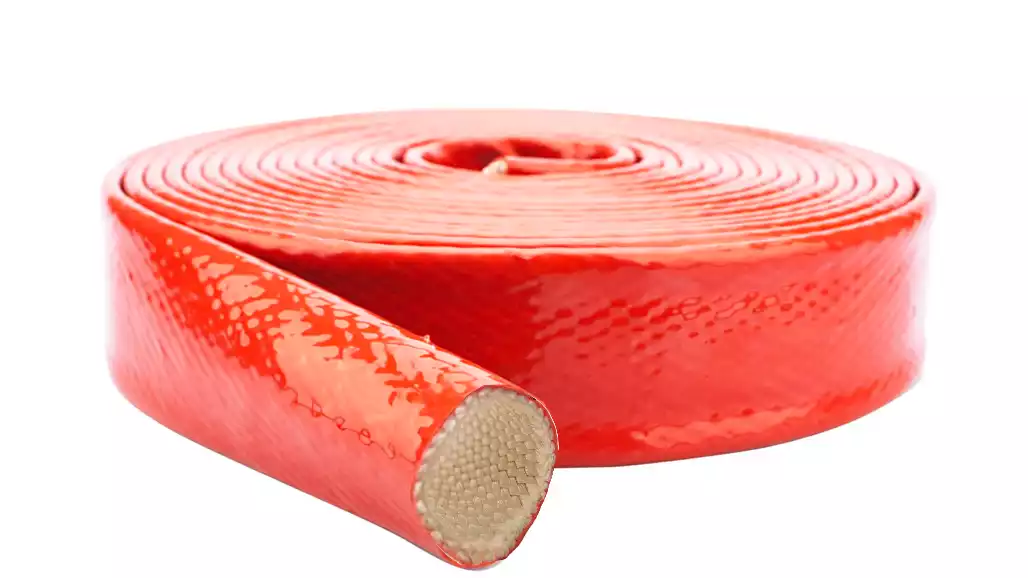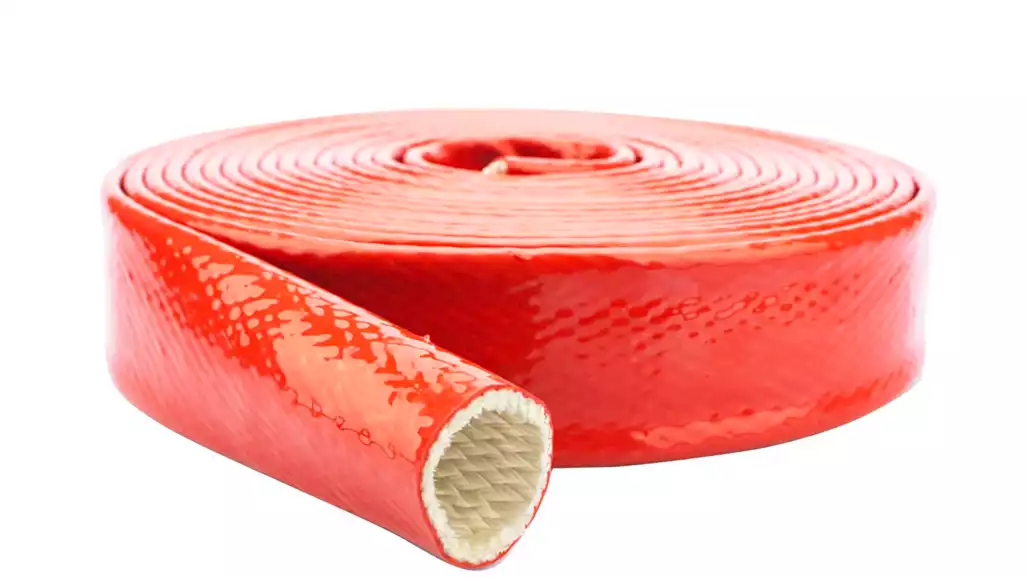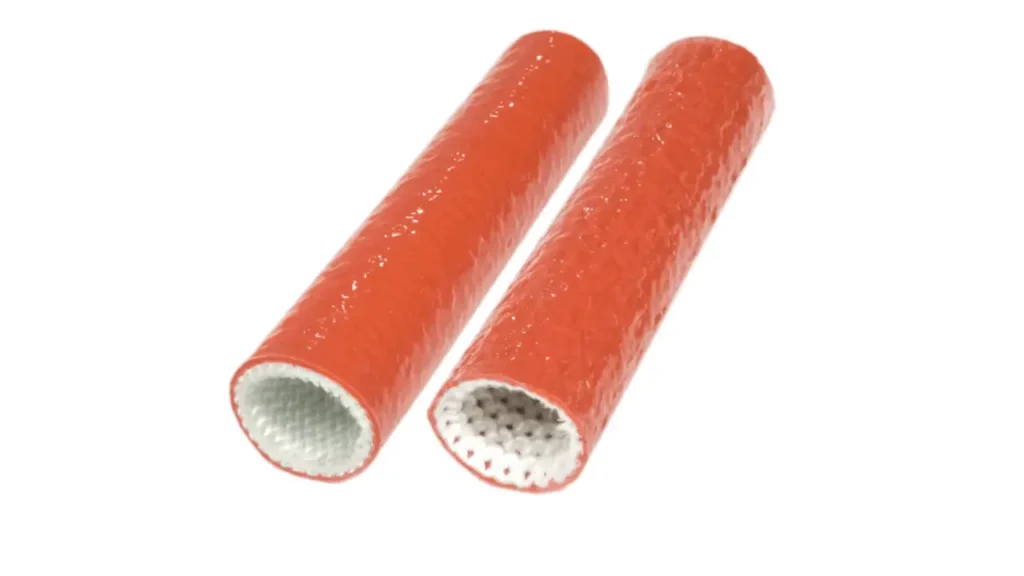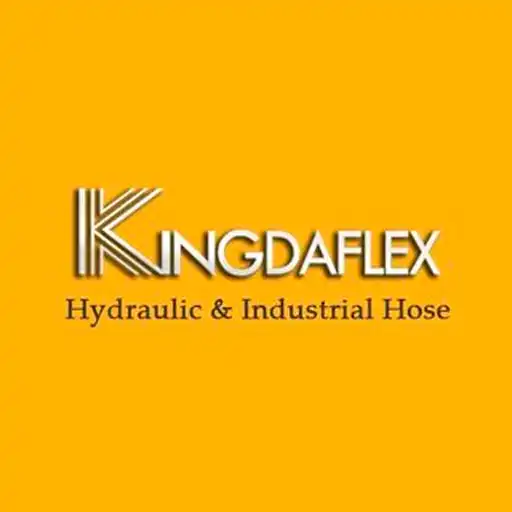When it comes to protecting hoses, cables, and wires from extreme heat, fire sleeves play a crucial role in ensuring durability and safety. Among the popular choices are braid fire sleeves and knit fire sleeves, both offering distinct structural designs and protective qualities for industrial and hydraulic applications.
Understanding the differences between braid and knit fire sleeves helps industries select the right option for their specific needs. While both provide thermal insulation, they vary in flexibility, strength, and resistance. Exploring their unique benefits and performance allows users to make informed decisions to achieve maximum protection and reliability.
What is Braid Fire Sleeve?

Braid fire sleeve is a protective cover made from braided fiberglass with a silicone rubber coating, designed to withstand high temperatures and mechanical stress. It offers excellent abrasion resistance, durability, and thermal protection for hydraulic hoses, cables, and wires in heavy-duty industrial environments.
- High Abrasion Resistance – The braided structure provides strong resistance against cuts, scrapes, and wear, making it suitable for rugged working conditions and extending the service life of hoses and cables.
- Durability in Harsh Environments – Its robust construction ensures long-lasting performance even under continuous exposure to heat, oil, and chemicals, offering reliable protection across various industries.
- Superior Thermal Protection – Capable of withstanding extreme temperatures, it shields hoses and wires from both direct flame and radiant heat, reducing the risk of damage or failure.
- Secure Fit and Stability – The braid design gives a snug fit around hoses and cables, preventing slippage and ensuring consistent coverage for long-term safety.
Knit Fire Sleeve

Knitted industrial-grade fire sleeves are frequently used for hose and cable protection in industrial settings where radiant heat and the potential for molten splashing are the main concerns. For heavy sectors like OEM and iron and steel, a knitted fire sleeve is the most popular option. For better durability and improved heat and flame protection, industrial fire sleeves are covered with a unique silicone rubber composition.
The lightweight, flexible, and expandable Kingdaflex knit fire sleeve is fitted on hydraulics to provide the hydraulic line with significant protection during the course of its useful life.
- Suitable for a wide range of situations and applications that call for hydraulic hoses, including welding operations and general industrial hose protection.
- We provide customized lengths based on your needs.
- The finest instrument for protecting hydraulic lines is a silicone-coated knit fire sleeve.
- In order to lower the final weight of the assembly, it is much lighter than the braided fire sleeve.
Braid Fire Sleeve Vs Knit Fire Sleeve

Braid fire sleeve and knit fire sleeve are both designed to protect hoses, cables, and wires from extreme heat, but they differ in structure, flexibility, and performance. Understanding their differences helps industries select the right type of sleeve for specific applications.
Structure
Braid fire sleeve is made from braided fiberglass coated with silicone rubber, providing a tighter weave and a more rigid structure. This makes it durable and highly resistant to abrasion in rough conditions.
Knit fire sleeve, on the other hand, uses a knitted fiberglass base with silicone coating. It has a looser weave that provides flexibility, allowing easy installation over hoses and cables with bends or irregular shapes.
Flexibility
The braid type offers a firm hold, but it is less flexible when compared to knitted sleeves. This makes it better suited for straight hoses and applications requiring a tight, secure fit.
Knit fire sleeves are highly flexible and can easily expand or adjust to fit over connectors, bends, or irregular surfaces, making them more convenient for installations in complex layouts.
Abrasion Resistance
Braid fire sleeves are designed for heavy-duty protection against mechanical wear, offering excellent abrasion resistance in environments with high friction or contact.
Knit fire sleeves provide moderate abrasion resistance, but they are not as tough as braided ones. They are better suited for environments where flexibility and ease of installation are more important than abrasion protection.
Thermal Protection
Both braid and knit fire sleeves provide excellent heat resistance, thanks to their fiberglass and silicone rubber composition. The braided design offers consistent coverage and durability under extreme heat conditions.
The knit design also offers effective thermal insulation but may have slightly less uniform protection due to its looser weave. It still performs well in environments with high radiant or direct heat.
Applications
Braid fire sleeves are commonly used in industries such as aerospace, automotive, and heavy machinery, where durability and resistance are critical for hose and cable safety.
Knit fire sleeves are ideal for general hydraulic systems, electrical harnesses, and applications where frequent installation or flexibility is needed, especially in tight or curved spaces.
Here are some differences between braided fire sleeves and knit fire sleeves:
| Aspect | Braid Fire Sleeve | Knit Fire Sleeve |
|---|---|---|
| Structure | Braided fiberglass with silicone coating, tight and rigid | Knitted fiberglass with silicone coating, looser and flexible |
| Flexibility | Less flexible, best for straight hoses and tight fit | Highly flexible, fits over bends and irregular shapes |
| Abrasion Resistance | Excellent, suitable for harsh and rugged environments | Moderate, less durable under heavy friction |
| Thermal Protection | Strong, consistent coverage in extreme heat | Good, effective but slightly less uniform |
| Applications | Aerospace, automotive, heavy machinery | Hydraulic systems, electrical harnesses, flexible layouts |
How to Choose Braid Fire Sleeve and Knit Fire Sleeve?
Choosing between braid fire sleeve and knit fire sleeve depends on your application needs, working environment, and installation requirements. Each type has unique strengths, so evaluating factors such as flexibility, durability, heat resistance, and abrasion protection ensures the best solution for hoses and cables.
- Consider Flexibility Needs – If your hoses or cables require frequent bends or installation in confined spaces, knit fire sleeves are ideal due to their expandable and flexible nature, making them easier to work with during maintenance or replacement.
- Evaluate Abrasion Resistance – For rugged environments with high friction or potential mechanical damage, braid fire sleeves offer superior abrasion resistance. Their tight structure protects hoses and cables effectively against cuts, scrapes, and wear over long-term industrial use.
- Check Thermal Requirements – Both braid and knit sleeves withstand high temperatures, but braid fire sleeves offer slightly stronger and more uniform protection. For critical applications where maximum thermal safety is necessary, braid is usually the preferred option.
- Review Installation Ease – Knit fire sleeves expand easily, fitting over connectors or irregular hose shapes. If quick or repeated installation is required, knit sleeves save time and effort, making them suitable for dynamic or complex layouts.
- Match to Application – Braid fire sleeves suit aerospace, automotive, and heavy machinery where durability is vital, while knit fire sleeves work best in hydraulic systems, electrical harnesses, and general industrial setups needing flexibility and cost efficiency.
Conclusion
Braid fire sleeves and knit fire sleeves are designed to meet different demands, making it essential to evaluate your working environment before choosing. Braid fire sleeves are stronger and more abrasion-resistant, while knit fire sleeves offer better flexibility and easier installation in tight or curved applications.
Selecting the correct fire sleeve directly impacts the safety and lifespan of your hydraulic hoses, wires, and cables. By comparing the performance, durability, and ease of use, you can ensure that your equipment remains protected against extreme heat and harsh conditions in demanding industries.
At Kingdaflex, we supply wholesale fire sleeves to meet both industrial and hydraulic protection needs. Whether you require braid fire sleeves for heavy-duty environments or knit fire sleeves for flexible applications, our solutions ensure long-lasting protection and reliability. Contact us today to source premium fire sleeves at competitive wholesale pricing.

